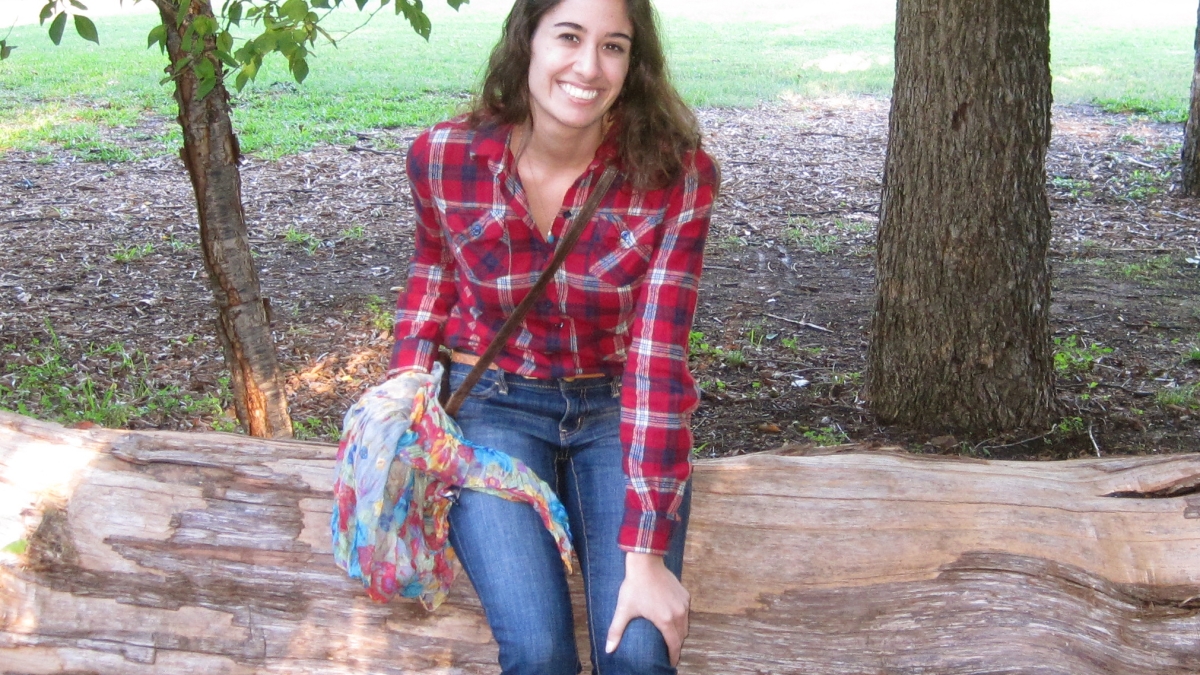ASU poetry student embraces bright future ahead

Editor's Note: This story is part of an ongoing series about student excellence at the university. To read more about some of ASU's outstanding students, click here.
Jacqueline Balderrama joined the master of fine arts in creative writing program at ASU this semester, with a focus in poetry. The former co-editor-in-chief of Mosaic, the University of California-Riverside’s literary journal, she was also a student of California Poet Laureate Juan Felipe Herrera.
Balderrama decided to come to ASU for her MFA because, “the program really balances teaching and writing, unlike other MFA programs in the country where you are expected to do more teaching than writing.” Balderrama also cited the small class sizes and the flexibility of her program at ASU, such as her ability to take fiction and poetry classes at the graduate level simultaneously, even though her focus is poetry.
While in California, Balderrama took first prize in the Ina Coolbrith Poetry Competition, which made her more deeply consider her writing priorities. “I’d never gotten paid for my writing before,” said Balderrama. “It was really thrilling to begin thinking that my poetry was better than my fiction.”
For the competition, Balderrama submitted a number of poems, but was perhaps most proud of “Tour of the Golden Gate: An Epilogue for Kees,” a poem which deals with poet Weldon Kees’ mysterious disappearance and assumed death in San Francisco in 1955.
“I like doing research,” said Balderrama, “I like looking up poets I’ve never heard of ... when I traveled to San Francisco, I visited the places Kees frequented and tried to imagine myself in his state of mind. For pieces like (this one), it’s important to try to experience what the writer experienced and incorporate that into the poem.” Balderrama’s research paid off, as “An Epilogue for Kees” is forthcoming in the literary magazine Solo Novo from Solo Press this fall.
“I try to keep my writing as clear as possible,” said Balderrama, “My poetry is definitely narrative in its form, and it draws a lot from my fiction writing.” The young poet cites the work of Philip Levine and Larry Levis as influences. “Levine’s language is so clear, but there are also so many layers to his work,” said Balderrama, “and it’s something I try to emulate.”
So far at ASU, Balderrama has been most interested in writing about her family: “There’s a lot I don’t know about (my family’s) history ... my mother’s side of the family is white and my father’s side of the family is Mexican, but neither he nor I speak Spanish. I feel like I’m caught between two worlds.”
Recently, Balderrama interviewed her grandfather, who served as a merchant marine in World War II, for some pieces she’s been working on. “I want to explore the story of my grandparents on both sides,” said Balderrama. “They’re not going to be here forever, and I can’t let myself be deprived of that history.”
Now teaching, as well as writing fiction and poetry, Balderrama expected the transition from undergraduate student to teacher to be a tough one, but found she had a facility with it: “I expected to be nervous, but once I got in front of the classroom I was surprisingly calm. All of a sudden you realize that you do have a lot to offer the students; you are the teacher, and all of the other people in the room are there to listen to you speak. It’s an amazing experience.”
Balderrama’s advice to undergraduates and aspiring writers is: “Take it seriously. You might get an 'A' in the course, but if you don’t have that drive to improve and succeed, you won’t have a significant experience. Talk to your professors – take advantage of that wealth of knowledge, be open to criticism in workshops and remember to take your own advice; that is, remember the suggestions you give to your fellow writers for your own work, too.”
For more information on ASU’s creative writing program in the Department of English, College of Liberal Arts and Sciences, please visit: http://www.english.clas.asu.edu/creativewriting.
Written by Jake Adler